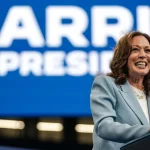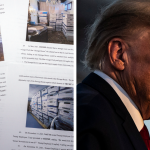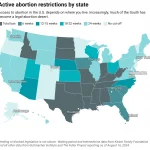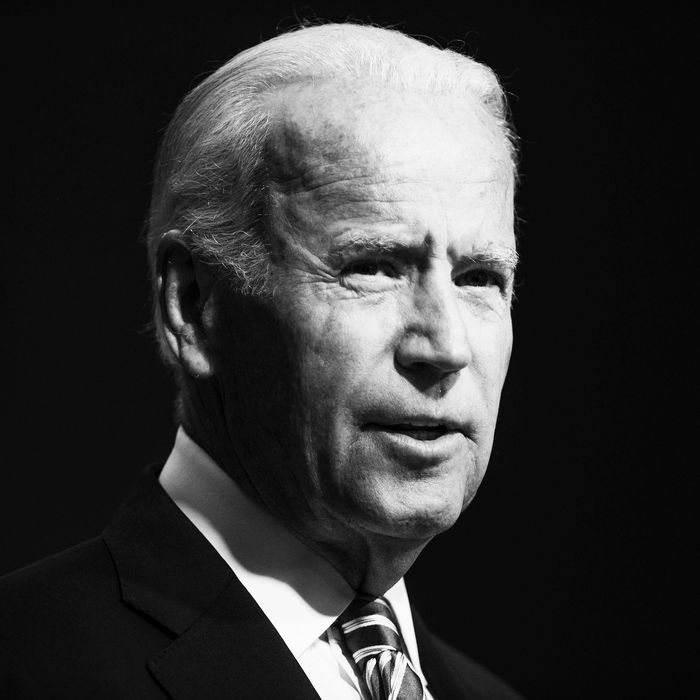Press Release — Published: May 23, 2024
Comer Releases Report on the Biden Administration’s Detrimental Green New Deal Agenda
WASHINGTON – Today, House Committee on Oversight and Accountability Chairman James Comer (R-Ky.) issued a report outlining how the Biden Administration’s Green New Deal energy policies have led to higher gas prices, growing uncertainty in America’s power sector, confusion in the market for new cars and appliances, and a labyrinth of expensive regulatory hurdles which have led to—and will continue to lead to—increased costs for all American consumers and businesses.
“The Biden Administration weaponized the power of the executive branch to wage a war against American-made energy production and cement in place radical, far-left energy policies that jeopardize domestic energy development, overload America’s power grid, and raise costs on all American consumers and businesses,” said Chairman Comer. “From day one, the House Oversight Committee has worked to expose the Biden Administration’s radical climate agenda. The Committee will continue to fulfill its responsibility to hold this Administration accountable for its detrimental Green New Deal policies that are impacting Americans across the country.”
The report, entitled “The Biden Administration’s Green New Deal: Paying More for a Dimmer Future,” details major problems facing critical sectors of the U.S. economy exacerbated by the Biden Administration’s shortsighted energy policies and ongoing failure to recognize the potential of American energy production. In addition, the report highlights the Biden Administration’s whole-of-government regulatory blitz which has slowed opportunities for economic growth and innovation and raised costs at an unprecedented pace.
Below are key findings from the report:
The disastrous energy policies of the Biden Administration have led to significantly higher gas prices. Gas prices were $2.39 per gallon the day after President Biden took office on January 20, 2021. On February 25, 2022, the day following Russia’s invasion of Ukraine, the national average for a gallon of gas had already reached $3.57—indicating that gas prices were already sky-high and rising under the Biden Administration despite protestations from President Biden that Russia was solely responsible for domestic fuel inflation. On June 14, 2022, average national gas prices surged to an all-time high, with the price of a gallon of regular unleaded gas reaching $5.016.
The Biden Administration’s whole-of-government avalanche of regulations has imposed over $1 trillion in additional regulatory costs on American businesses and consumers. Since assuming office on January 20, 2021, the Biden Administration has pursued a “whole-of-government” regulatory blowout that has substantially increased costs and added millions of hours of new annual paperwork demands.
While Committee Democrats continue to demonize America’s energy producers in the oil and gas industry, the Biden Administration’s electrification push is rapidly driving up electricity prices for all Americans. The Bureau of Labor Statistics has indicated that over the past year electricity prices have risen faster than the pace of inflation and more so than any other commodity. Sweeping electrification initiatives—such as for electric vehicles (EVs) in the automotive sector—scaling of artificial intelligence utilization, enormous data center expansions, and federal incentivization of onshore manufacturing in the industrial sector, have dramatically increased the demand facing our nation’s electrical grid.
The Environmental Protection Agency’s (EPA) drastic new emissions rule for America’s fossil fuel-fired powered plants disregards science, policy recommendations, and stakeholder feedback warning that EPA’s actions are neither feasible nor cost-effective. Documents obtained by the Committee show the EPA and this Administration is willfully disregarding the cost and legality of its proposed emissions rule which would jeopardize America’s power grid, raise long-term energy costs, and cement Green New Deal priorities.
Federal subsidies in the Democrats’ Inflation Reduction Act (IRA) will cost taxpayers millions. On March 12, 2024, the Subcommittee on Economic Growth, Energy Policy, and Regulatory Affairs held a hearing featuring testimony from an expert witness who explained how the IRA will distort markets and estimated that IRA production tax credits could cost taxpayers $3 trillion by the year 2050.
Click here to read the report.
Biden Makes Sweeping Changes to Oil and Gas Policy (csis.org)
Biden Makes Sweeping Changes to Oil and Gas Policy
Critical Questions by Ben Cahill
Published January 28, 2021
President Joe Biden has followed through on a campaign pledge by introducing a moratorium on new oil and gas leasing on federal lands and waters. With nearly 25 percent of U.S. oil and gas production coming from federal lands, the policy shift may have significant implications for future investment and production. The backlash from oil and gas producing states will be fierce and lawsuits have already begun, but the Biden administration views this policy as a key part of its climate agenda and is unlikely to change course.
Q1: What changes has Biden made?
A1: In a January 27 executive order that introduced a sweeping, government-wide approach to climate policy, Biden announced several new oil and gas policies. The Biden administration is halting new oil and gas leasing on federal onshore lands and offshore waters “to the extent consistent with applicable law.” This pause will not affect existing operations or permits for existing leases, and private lands will not be affected. The Department of the Interior states that Native American tribal lands will be exempted. Biden has also directed the secretary of the interior to consider whether to adjust coal, oil, and gas royalties in order to account for corresponding climate costs, suggesting the possibility of a royalty increase. Biden ordered the Department of the Interior to take steps toward conserving 30 percent of public lands and waters by 2030 and toward doubling offshore wind production in the same timeframe. These moves follow executive orders that halted implementation of a leasing program in the Arctic National Wildlife Refuge and effectively suspended new leases, contracts, or drilling permits for at least 60 days. Biden’s January 20 executive order also withdrew the permit for the Keystone XL pipeline and directed agencies to consider new rules to curb methane emissions from oil and gas. Last, Biden has directed government agencies to work toward eliminating fossil fuel subsidies by fiscal year 2022.
Q2: How will this affect U.S. oil and gas production?
A2: Federal land accounts for about 24 percent of oil and gas production in the United States, mainly in the offshore Gulf of Mexico. But since companies with existing leases will not be affected, the near-term impact on exploration and production as well as royalties to states will be limited. With more than 26 million onshore acres and 12 million offshore acres already under lease, there is a deep inventory of exploration opportunities. Companies may have secured more onshore and offshore permits in recent lease sales in anticipation of a policy change by the Biden administration. A more permanent leasing ban would have a significant impact, although visible offshore production declines may not materialize for up to 10 years, given the typical timeframe for planning, exploration, appraisal, and development. Onshore production declines could conceivably show up faster, but leases typically last for 10 years and drilling activity on recently acquired leases may not begin for some time. A permanent ban on new leases would affect numerous states with oil and gas resources. New Mexico—home to the prolific Delaware Basin—is an exception to the rule that most shale oil and gas resources are found on private lands, and the state accounts for more than 60 percent of existing federal drilling permits. Rocky Mountain states including Wyoming, Colorado, and Montana would take a hit from a permanent leasing ban. The Gulf States would be harmed by declining exploration and production due to lower royalties, as well as the impact on the oilfield services sector and related industries. In general, a leasing ban on public lands would drive more investors to private and state land.
Q3: Will this lead to a permanent leasing ban on public lands?
A3: The leasing moratorium is likely just the beginning of a significant policy shift. The president has asked the Department of the Interior for a comprehensive review of the federal oil and gas program, and directed government agencies to examine the climate impact of future oil and gas activity on public lands. These reviews are likely to generate new rules and guidance. The Bureau of Land Management (BLM) could potentially impose stricter requirements for future resource management plans for onshore areas, perhaps by introducing tougher climate impact assessments in the National Environmental Policy Act reviews of proposed land use plans. Applications for permit to drill (APDs) on federal lands are typically granted for two years and are often extended. In the future, however, the BLM could impose tougher requirements related to gas flaring or water management that will make it harder for onshore operators to secure new drilling permits. The Bureau of Safety and Environmental Enforcement could take the same tack with offshore APDs. The exact rules and guidance that may emerge are difficult to predict. But aside from outright bans on new leasing, there are many ways to raise the regulatory bar so high that it could be difficult for companies to operate on federal lands.
Q4: How are resource states reacting?

A4: Industry associations object to Biden’s executive orders, arguing that they will deter investment, kill jobs, reduce state revenues, and shift oil and gas production to other countries. Legal battles have already begun. Lawmakers in states like Alaska, Wyoming, Montana, and the Gulf Coast states have vowed to contest Biden’s plans, and may argue that laws including the Mineral Leasing Act require regular lease sales on public lands. Some governors may seek exceptions to the ban on leasing, but such efforts seem unlikely to succeed. The Biden campaign made these pledges to halt new leasing months ago and knew they would generate a backlash. The administration is determined to push ahead with its climate and energy priorities and emphasizes the number of new jobs that will be created in expanding renewable energy and associated infrastructure.
Ben Cahill is a senior fellow in the Energy Security and Climate Change Program at the Center for Strategic and International Studies in Washington, D.C.
~ PUREGNS ~
TRUMP
Dow Jones
1/20/2017 to 1/20/2021
19,827.25 — 31,097.97 = 11,270.72 (With LOCKDOWNS at the end! Very low Inflation!)
This was even with the huge drop in March 2020 from Lockdowns.
It dropped to 19,173.98 on March 23, 2020, and STILL jumped back to 31,097.97 when Trump left office.
!!!-REPEAT-!!!
~~]} =——– DROPPED to 19,173.98 and jumped up to 31,097.97 when Trump LEFT office!!!
So, in a very little time from March 23,2020 to 1/20/2021 the Dow Jones went up 11,303.99
BIDEN / HARRIS
Dow Jones
1/20/2021 to 9/15/2024
Rumors are a major crash is incoming!
31,097.97 — 41393.78 =
Only a difference of — 10,295.81
The push that our economy is doing great for now is smoke and mirrors.
Search for: The Dispatch – Measuring the Economy Under Donald Trump and Joe Biden.
The examples of using the jabs as an excuse to why we are seeing excess inflation and that Trump botched everything during his Presidency is a load of garbage.
Do you not recall who all in government also supported his decisions and were the actual major decision makers like Fauci and others that control the world interactions when pandemics occur?
Throwing blame at one person is ludicrous at best and I don’t care was President at the time. You have too many others that interact and push the final say in anything especially in politics.
If Biden was there first everything would be thrown out of proportion and all on him.
It’s also not simply just corporate greed as there are too many factors to consider in how pricing is influenced.
Many issues we are seeing today are direct reflections to forced Executive Orders by Biden on his first day in office and the months afterwards.
A President should not be able to influence gas prices or other prices but due to his cuts on energy and other major components in our economy we are where we are today with forced inflation.
Don’t forget about all the exorbitant amount of government spending Biden did throughout his term so far. In his first eight months in office, he spent more than 2018 and 2019 combined. Then there’s all the Billions pushed overseas for wars.
Biden’s administration is also taking credit for bounce back jobs from going back to work the months and years after the jabs that would have already been there.
Also, more people are having to get multiple jobs just to live day by day.
I could go on and on. People really need to get away from liberal media completely and learn what they are supporting.
————-
Back to the issue of a potential stock market crash. Just look into how many major stock market holders are selling off their stocks and how many indicators by investors are majorly pointing towards something bad incoming referenced as a “Yield Curve”.






































































